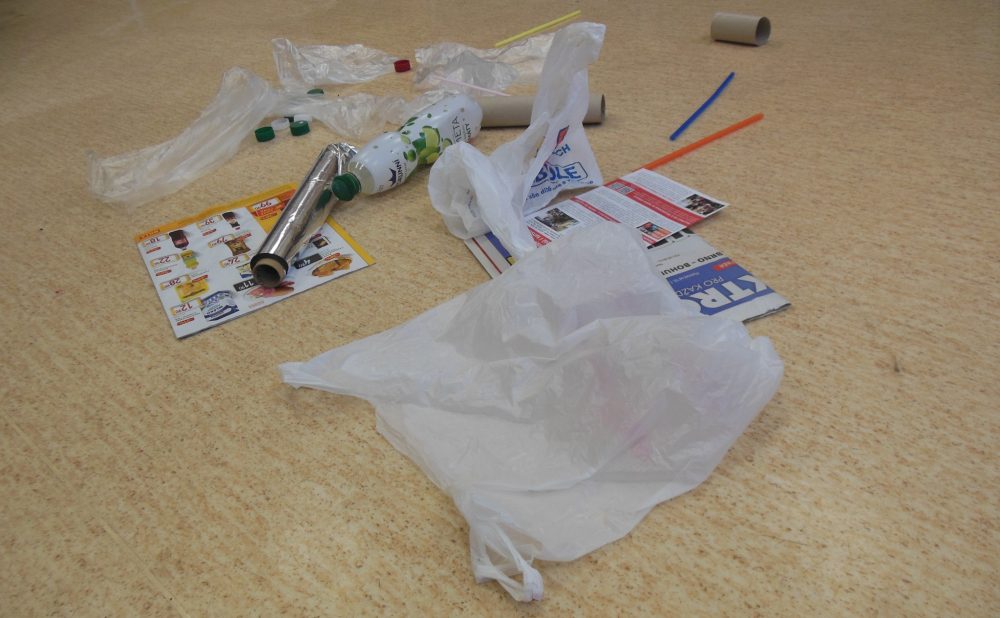Summary
In the process of children play which is to a certain extent the manifestation of free creative activity, the phases lead from illustrative nature to a new skill, knowledge and experience. This psychological aspect is a generally valid starting point for a pedagogical application especially in pupils of a younger school age. Musically-expressive means with which we work in school music education are too abstract for these children. Especially the auditory illustrative nature helps the pupils to understand, sometimes in connection with the visual support. The rule of illustrative nature is not limited by the pupils’ age, it accompanies the development of abstract thinking also in further development stages.
The activities in this block focus on the development of receptive and listening skills and creation of stimuli to improvisation on the basis of auditory perceptions, fantasy and children intuition. The attention of pupils is given to perception of sounds from the nature, observation of musically-expressive aspects during the birds singing, their record in a graphic form and especially sound realization using different materials. The improvisation is in unison or polyphony. The chosen child in the role of a conductor conducts the birds singing (bird concert). Creative elements penetrate receptive and interpretational activities, further art or handmade manifestations.
References: Module 3,
Duration: 45 min
Key words creativity & entrepreneurship: Interaction with the environment, Imagination, Originality of ideas, Flexibility, Exploration, Identification of problems, Development of ideas and solutions
Description
Step 1
The teacher chooses 4 records with birds singing (rook, woodlark, sparrow hawk, black stork). (Available e. g. from the online internet atlases of birds or the server youtube.com)
Rook (Corvus frugilegus)
Woodlark (Lullula arborea)
Sparrow Hawk (Accipiter nisus)
Black Stork (Ciconia nigra)
The pupils listen to the individual records. They observe the character of bird singing, its melody, rhythm, dynamics and tempo.
Step 2
During the repeated listening, they try to write a graphic record (see the worksheet for pupils no. 1–3, M3B1PL1-3 ). (Records: birds singing – graphic record)
Step 3
Individual and collective reflection:
The pupil introduces one of their four records, they describe how they proceeded, what interested them. The others express to their realization – on what they agree, what they dealt with differently.
Step 4
The pupils are divided into four groups. Each group chooses one of the graphic records which they try to express by the game with sounds using different materials, e. g. paper, plastic bottles, ring rubbers, Velcro fastening etc.
Step 5
The sound realization of graphic records of bird singing in unison and also polyphony. The pupils create “bird concert” on the basis of own listening imaginations, fantasy and intuition. The beginnings of individual groups are shown by a conductor.
Variants
Saint-Saëns: The Carnival of the Animals, 2nd part Hens and Roosters. (Listening to the composition, graphic record describing the manifestation of both birds and its movement expression).
Competencies
The pupils are able to:
- distinguish between the basic musically-expressive means
- be led to the development of sense of orientation in a tone space
- express the sound perception by a graphic record
- change the graphic record into a sound form using untraditional material
- be led to the development of polyphony, they respond to conductor’s gesture – bird concert
Materials
- NAŠI PTÁCI : atlas našich ptáků [OUR BIRDS: Atlas of Our Birds]. [online]. © 2017, BRETICEK All Rights Reserved [cit 2017-01-31]. Dostupné z: http://www.nasiptaci.info/?page_id=5023
- Saint-Saëns, C. The Carnival of the Animals, 2nd Hens and Roosters.
- The worksheet for the pupils, no. 1–3: M3B1PL1-3
- The objects for the play with sounds, e. g. paper, plastic, aluminium foil, bottle lids, Velcro fastening etc.
Module Overview
|
